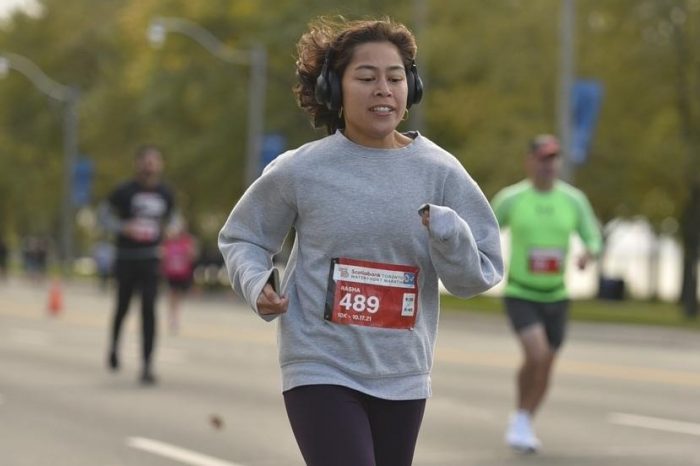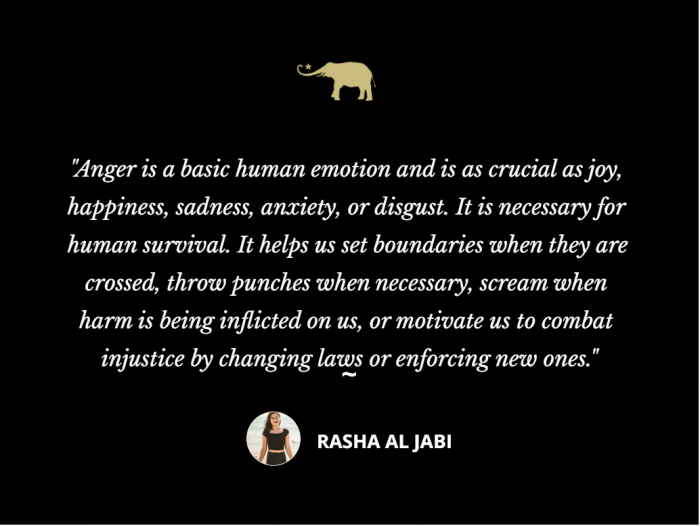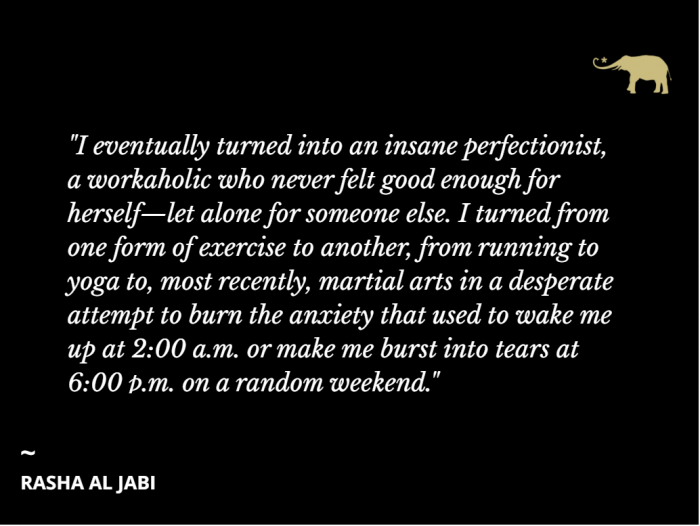“Usually when people are sad, they don’t do anything. They just cry over their condition. But when they get angry, they bring about a change.” ~ Malcolm X
~
For as long as I could remember, I held on to anger. But I could never feel it, embrace it, nor direct it to where it belonged.
I was a quiet, introverted teenager, but that doesn’t mean I didn’t experience moments of resentment, anger, hatred, or suffering. It didn’t mean that I did not occasionally feel like blowing up.
There are many emotions that tend to get a bad reputation in our modern world. Anger is one such emotion. We value individuals who seem more passive over those who are outspoken, albeit in an aggressive way sometimes. Of course, no one likes to deal with a persona who’s constantly angry or yells, whether it be in business or in our personal lives. However, there’s something to be said about our resistance to anger when it arises within ourselves or our immediate circle.
Perhaps it reminds us of an angry parent or a crazy, obsessive, and jealous ex who used to channel anger in a coercive, nonconstructive, or abusive way.
Whatever the reason is, if our tendency is to cringe at the sight of someone who exhibits anger, it is likely that we suppress anger when it arises within ourselves, too. But I don’t think shoving our anger aside is an act of heroism, martyrdom, or a badge of honor to be proud of.
According to this article, anger is a basic human emotion and is as crucial as joy, happiness, sadness, anxiety, or disgust. It is necessary for human survival. It helps us set boundaries when they are crossed, throw punches when necessary, scream when harm is being inflicted on us, or motivate us to combat injustice by changing laws or enforcing new ones.
In other words, it is an elemental emotion that is tied to our fight-flight-freeze response of the sympathetic nervous system, and if it weren’t that significant, it wouldn’t have belonged to the autonomic nervous system—this complex, intricate web that connects to the brain—to begin with.
This, however, doesn’t mean that every time we feel angry, our first instinctual, knee-jerk reaction should be to punch people in the face. It is one thing to fully tune into our aggression and to honor the space from which it is coming, and another thing to be hijacked by our emotions in a way that makes us lose control. The truth is, the more we train ourselves to accept and embrace anger, but to also take a deep breath and pause before we react, the more able we are to react from a place of mindful choice instead of sporadic irrationality and irritability.
That doesn’t mean, however, that we will never feel angry anymore or that we won’t experience anger. It simply means that we get to choose how we would like to react—even if it means that our choice is to eventually punch the motherf*cker who hurt us.
Here are my five tried-and-proven ways in which running has helped me embrace my anger and make better choices (on the road and in life):
1. The angrier I felt, the faster I ran, the better I felt.
When I first started running 12 years ago, I didn’t have any great ambition to become athletic—and I certainly didn’t expect myself to participate in every 10-kilometer run I could find in town.
In reality, I was just following my instincts. I felt angry and resentful toward life and was extremely unhappy with my current environment and surrounding. I also carried a lot of physical trauma. So in a way, and according to the body-based modalities of healing trauma, I was trying to find a release through the energetic channels of the body, not even knowing that what I was doing was taught by the ancient yogis almost 5,000 years ago.
The best part of it all was how I utilized feeling angry to give me the adrenaline kick to push through the burn—to push through that extra kilometer, to increase my pace, and to run as fast as my legs (and stamina) would allow me to.
After pushing through for five, six, or seven kilometers, I was always encased with a calm gentleness. It felt like the silence after the hurricane. It was the most powerful quiet I had ever experienced.
2. It kept me away from “bad” addiction.
I say “bad” addiction because while all addiction is inherently bad, some forms of addiction, particularly drugs, alcohol, and porn, tend to get a worse reputation and judgment in the eyes of society.
I eventually turned into an insane perfectionist, a workaholic who never felt good enough for herself—let alone for someone else. I turned from one form of exercise to another, from running to yoga to, most recently, martial arts in a desperate attempt to burn the anxiety that used to wake me up at 2:00 a.m. or make me burst into tears at 6:00 p.m. on a random weekend.
I mean, sure, in the grand scheme of things, exercise is healthy. But if we’re approaching it with the same mindset and attitude of dependency as we approach substance use, is it still healthy? I’d argue not. But am I grateful for picking one over the other? Certainly yes.
3. It was my first introduction to mindfulness.
Long ago, before social media became a thing and all these YouTube channels started popping with yoga teacher videos right, left, and center, I had no idea what the hell meditation or mindfulness was. I grew up in a conservative Muslim background where the closest form of mindfulness was prayer. But the idea of mixing prayer and/or mindfulness in a form of physical activity other than worship was sometimes seen as blasphemous.
But running taught me otherwise. Whenever I’d put my headphones on and blast the music, I was finally able to be in the moment—even when I didn’t know that was a thing.
I was able to be present, to focus on putting one foot ahead of the other, and tune into the sensations of my body. And it felt great to feel my body: the feeling of heat building, the sweat dripping, the blood pumping, the heart racing, the lungs gasping for air, and the muscles growing sore.
And the best part is the first fresh breath of air while pausing for the first time after running for 30 to 40 minutes. It always filled me with a deep sense of gratitude for all my body is able to do.
4. It taught me about the importance of routine.
Over the years, I grew more appreciative of the importance of rituals and building routines. In the middle of a bad day or whenever I wake up on the wrong side of the bed, routines taught me to start my day with the essentials: taking a moment to pause, taking three deep belly breaths, fixing the bed, washing my face, brushing my teeth, combing my hair, and doing things (or at least trying to do them) with good intentions.
In the same way, when I integrated running as part of my weekly routines, it gave me something to look forward to.
Once I put those running shoes on and hit the road, I almost always felt better, not because I was running, but because I made the time to commit to something, which brings me to my next point.
5. I showed up for myself—almost always.
There are so many moments in life when I had failed myself, and being a perfectionist with a debilitating imposter syndrome and a loud inner critic didn’t help either.
Oftentimes, I had abandoned myself in relationships despite reading the early red flags, I chose jobs that I knew weren’t fulfilling or suitable for me, I stayed quiet in situations where I knew I should have spoken, and I felt safer shrinking myself to fit into other people’s expectations of who I was and how I should be rather than who I knew myself to be.
There are many spaces where I had repeatedly let myself down, but not in running.
In this little time that I carved, I taught myself about the importance of showing up—that I am able to commit to something I had promised myself instead of abandoning myself because of a fleeting negative emotion.
It didn’t matter whether I was having a horrible day at work or staying in late or had deadlines to fulfill or was down spiraling into self-ruminating thoughts. It didn’t matter whether I was feeling sluggish or lazy or like being a couch potato for the night. Once I made a personal commitment to run those few nights a week, I showed up for myself, fully, and not because I had to but because I wanted to.
Today, I view sports and my body as more than just an opportunity to focus on external appearances. Instead, I see my body as an instrument to refine and to continuously understand the impact that movement has on building healthy habits and a clear, strong mindset.
Being competitive in nature and holding a bit of aggression from my past, I learned how to utilize the proper tools to channel these (so-called) negative emotions in a way that builds discipline, character, dedication, and nonattachment to the outcome, no matter how difficult it can be.
I was finally able to feel anger when I had learned how to suppress it all these years.
I learned that aggression isn’t something to be ashamed of or that should be hidden, shoved, or transformed, and that self-acceptance and compassion are the truest, most genuine forms of commitment to ourselves.
But most importantly, through seeing what my body is capable of accomplishing, I learned that this mindset of perseverance and dedication can be applied to any other area in my life, especially the ones where I struggle the most to stay compassionate.
I learned that whether it is fear, anger, resentment, frustration, judgment, insecurity, scarcity, hollowness, or grief, it is safe to feel them all through my body.
How about you? How has movement shown up beyond the expectations of your physical appearance? And what has it taught you about yourself? If inspired, leave a mindful comment.
May it be of benefit.














Read 19 comments and reply